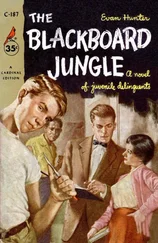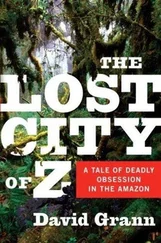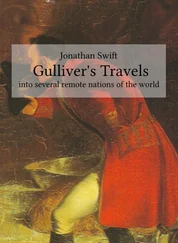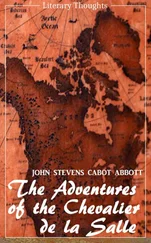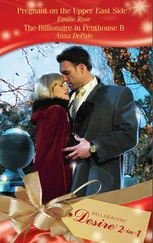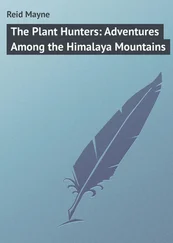Algot Lange - In the Amazon Jungle - Adventures in Remote Parts of the Upper Amazon River, Including a Sojourn Among Cannibal Indians
Здесь есть возможность читать онлайн «Algot Lange - In the Amazon Jungle - Adventures in Remote Parts of the Upper Amazon River, Including a Sojourn Among Cannibal Indians» весь текст электронной книги совершенно бесплатно (целиком полную версию без сокращений). В некоторых случаях можно слушать аудио, скачать через торрент в формате fb2 и присутствует краткое содержание. Жанр: Путешествия и география, Приключения про индейцев, на английском языке. Описание произведения, (предисловие) а так же отзывы посетителей доступны на портале библиотеки ЛибКат.
- Название:In the Amazon Jungle : Adventures in Remote Parts of the Upper Amazon River, Including a Sojourn Among Cannibal Indians
- Автор:
- Жанр:
- Год:неизвестен
- ISBN:нет данных
- Рейтинг книги:3 / 5. Голосов: 1
-
Избранное:Добавить в избранное
- Отзывы:
-
Ваша оценка:
- 60
- 1
- 2
- 3
- 4
- 5
In the Amazon Jungle : Adventures in Remote Parts of the Upper Amazon River, Including a Sojourn Among Cannibal Indians: краткое содержание, описание и аннотация
Предлагаем к чтению аннотацию, описание, краткое содержание или предисловие (зависит от того, что написал сам автор книги «In the Amazon Jungle : Adventures in Remote Parts of the Upper Amazon River, Including a Sojourn Among Cannibal Indians»). Если вы не нашли необходимую информацию о книге — напишите в комментариях, мы постараемся отыскать её.
In the Amazon Jungle : Adventures in Remote Parts of the Upper Amazon River, Including a Sojourn Among Cannibal Indians — читать онлайн бесплатно полную книгу (весь текст) целиком
Ниже представлен текст книги, разбитый по страницам. Система сохранения места последней прочитанной страницы, позволяет с удобством читать онлайн бесплатно книгу «In the Amazon Jungle : Adventures in Remote Parts of the Upper Amazon River, Including a Sojourn Among Cannibal Indians», без необходимости каждый раз заново искать на чём Вы остановились. Поставьте закладку, и сможете в любой момент перейти на страницу, на которой закончили чтение.
Интервал:
Закладка:
The operator strikes the slabs with a wooden mallet or hammer, the head of which is wrapped with an inch layer of caoutchouc and then with a cover of thick tapir-skin. Each section of the wooden slabs gives forth a different note when struck, a penetrating, xylophonic, tone but devoid of the disagreeably metallic, disharmonic bysounds of that instrument. The slabs of wood were suspended by means of thin fibre-cords from the crosspieces, and in this manner all absorption by the adjacent material was done away with.
By means of many different combinations of the four notes obtained which, as far as I could ascertain, were Do—Re—Mi—Fa , the operator was able to send any message to a person who understood this code. The operator seized one mallet with each hand and gave the thickest section, the Do slat, a blow, followed by a blow with the left hand mallet on the Re slat; a blow on the Mi slat and on the Fa slat followed in quick succession. These four notes, given rapidly and repeated several times, represented the tuning up of the "wireless," calculated to catch the attention of the operator at the maloca up-creek. The sound was very powerful, but rather pleasant, and made the still forest resound with a musical echo. He repeated this tuning process several times, but received no answer and we proceeded for a mile. Then we stopped and signalled again. Very faintly came a reply from some invisible source. I learned afterwards that at this time we were at least five miles from the answering station. As soon as communication was thus established the first message was sent through the air, and it was a moment of extreme suspense for me when the powerful notes vibrated through the depth of the forest. I shall never forget this message, not only because it was ethnographically interesting, but because so much of my happiness depended upon a favourable reply. I made the operator repeat it for my benefit when we later returned to our village, and I learned it by heart by whistling it. When printed it looks like this:
After each message the operator explained its meaning. The purport of this first message was so important to me that I awaited the translation with much the same feelings that a prisoner listens for the verdict of the jury when it files back into the court-room.
Questions and answers now came in rapid succession. "A white man is coming with us; he seems to have a good heart, and to be of good character."
Whereupon the deciding answer was translated: "You are all welcome provided you place your arms in the bottom of the canoe."
Next message: "We ask you to place your arms in the maloca ; we are friends."
After the last message we paddled briskly ahead, and at the end of one hour's work we made a turn of the creek and saw a large open space where probably five hundred Indians had assembled outside of two round malocas , constructed like ours. How much I now regretted leaving my precious camera out in the forest, but that was a thing of the past and the loss could not be repaired. The view that presented itself to my eyes was a splendid and rare one for a civilised man to see. The crowd standing on the banks had never seen a white man before; how would they greet me?
Little dogs barked, large scarlet araras screamed in the tree-tops, and the little children hid themselves behind their equally fearful mothers. The tribal Chief, a big fellow, decorated with squirrel tails and feathers of the mutum bird around, his waist and with the tail feathers of the scarlet and blue arara -parrot adorning his handsome head, stood in front with his arms folded.
We landed and the operator dismantled his musical apparatus and laid it carefully in the bottom of the canoe. The two Chiefs embraced each other, at the same time uttering their welcome greeting " He—He ." I was greeted in the same cordial manner and we all entered the Chief's maloca in a long procession. Here in the village of the kindred tribe we stayed for two days, enjoying unlimited hospitality and kindness. Most of the time was spent eating, walking around the malocas , looking at dugouts, and at the farinha plants.
On the third day we went back to our maloca where I prepared for my return trip to civilisation. It was now the beginning of October.
I would, finally, have recorded many words of the Mangeroma language had not my pencil given out after I had been there a month. The pencil was an "ink-pencil," that is, a pencil with a solid "lead" of bluish colour, very soft, sometimes called "indelible pencil." This lead became brittle from the moisture of the air and broke into fragments so that I could do nothing with it, and my recording was at an end. Fortunately I had made memoranda covering the life and customs before this.
CHAPTER X.
THE FIGHT BETWEEN THE MANGEROMAS AND THE PERUVIANS
I was sitting outside the maloca writing my observations in the note-book which I always carried in my hunting-coat, when two young hunters hurried toward the Chief, who was reclining in the shade of a banana-tree near the other end of the large house. It was early afternoon, when most of the men of the Mangeromas were off hunting in the near-by forests, while the women and children attended to various duties around the village. Probably not more than eight or ten men remained about the maloca .
I had recovered from my sickness and was not entirely devoid of a desire for excitement—the best tonic of the explorer. The two young hunters with bows and arrows halted before the Chief. They were gesticulating wildly; and although I could not understand what they were talking about, I judged from the frown of the Chief that something serious was the matter.
He arose with unusual agility for a man of his size, and shouted something toward the opening of the maloca , whence the men were soon seen coming with leaps and bounds. Anticipating trouble, I also ran over to the Chief, and, in my defective Mangeroma lingo, inquired the cause of the excitement. He did not answer me, but, in a greater state of agitation than I had previously observed in him, he gave orders to his men. He called the "wireless" operator and commanded him to bring out his precious apparatus. This was soon fastened to the gunwales of the canoe where I had seen it used before, on my trip to the neighbouring tribe, and soon the same powerful, xylophonic sounds vibrated through the forest. It was his intention to summon the hunters that were still roaming around the vicinity, by this "C.Q.D." message. The message I could not interpret nor repeat, although it was not nearly as complex as the one I had learned before. After a while, the men came streaming into the maloca from all directions, with anxiety darkening their faces. I had now my first inkling of what was the cause of the commotion, and it did not take me long to understand that we were in danger from some Peruvian caboclos . The two young men who had brought the news to the Chief had spied a detachment of Peruvian half-breeds as they were camping in our old tambo No. 6, the one we had built on our sixth day out from Floresta. There were about a score of them, all ugly caboclos , or half-breed caucheros , hunting rubber and no doubt out also for prey in the shape of young Mangeroma girls, as was their custom. The traps set by the Indians, as described in a previous chapter, would be of no avail in this case, as the number of Peruvians was greater than in any previous experience.
The enemy had been observed more than ten miles off, in an easterly direction, when our two hunters were on the trail of a large herd of peccaries, or wild boars, they had sighted in the early morning. The Peruvians were believed to be heading for the maloca of the Mangeromas, as there were no other settlements in this region excepting the up-creek tribe, but this numbered at least five hundred souls, and would be no easy prey for them.
Читать дальшеИнтервал:
Закладка:
Похожие книги на «In the Amazon Jungle : Adventures in Remote Parts of the Upper Amazon River, Including a Sojourn Among Cannibal Indians»
Представляем Вашему вниманию похожие книги на «In the Amazon Jungle : Adventures in Remote Parts of the Upper Amazon River, Including a Sojourn Among Cannibal Indians» списком для выбора. Мы отобрали схожую по названию и смыслу литературу в надежде предоставить читателям больше вариантов отыскать новые, интересные, ещё непрочитанные произведения.
Обсуждение, отзывы о книге «In the Amazon Jungle : Adventures in Remote Parts of the Upper Amazon River, Including a Sojourn Among Cannibal Indians» и просто собственные мнения читателей. Оставьте ваши комментарии, напишите, что Вы думаете о произведении, его смысле или главных героях. Укажите что конкретно понравилось, а что нет, и почему Вы так считаете.


